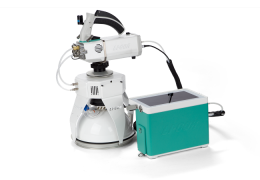Soil chamber software controls
When the 6800-19 Custom Chamber block is detected by the LI-6800 head, one of the computational options presented is 6800-09 Soil. Select this option to power on the light source connector in the head, into which the soil chamber should be plugged; select any other option to disable power at the connector.
The Start Up tab
Select 6800-09 Soil on the Start Up > Chamber Setup page to make soil measurements.

A number of interface changes happen after selecting 6800-09 Soil:
- Environment tab: Fan and Light controls are hidden
- Constants tab: Gas Exchange, Leaf Temp, and Leaf Light are hidden
- Log Files tab: Match options are hidden
- Measurements tab: Replaced with a Soil Flux tab, with corresponding settings.
The Environment > Flow tab
Some settings and controls for the soil chamber are available under the Environment > Flow tab. You do not need to do anything here for soil flux measurements. All the options are under the Soil Flux tab (described next).
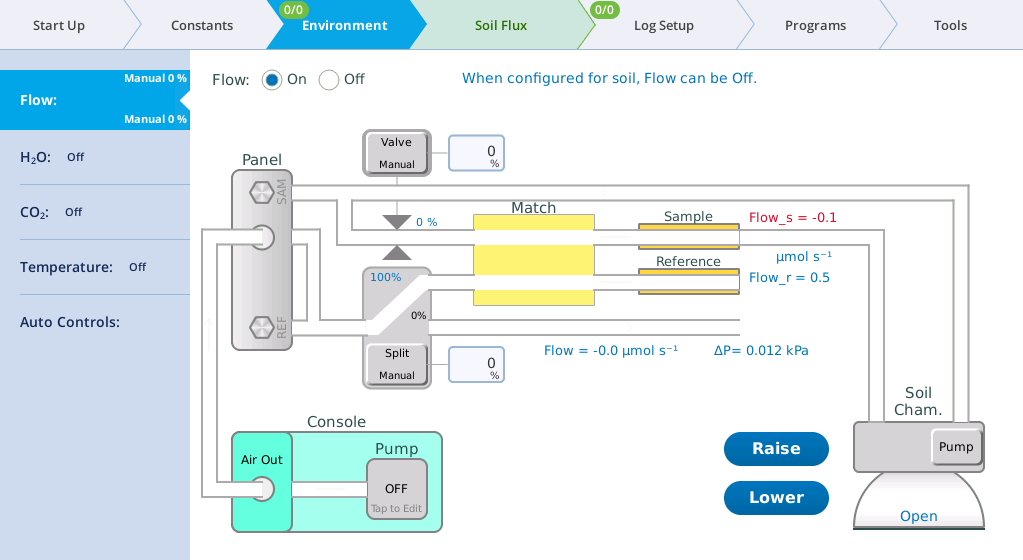
The Soil Flux tab
This tab hosts the soil flux measurement control panel, which contains nearly everything necessary to make and analyze soil flux measurements.
Settings tab
The Settings tab is used to define the measurement: set constants and configure measurement parameters. It contains all of the computational constants, sensor settings, and measurement configurations. The Constants and Configuration columns have check boxes that, if checked, simplify your choices to settings that are appropriate for the 6800-19 chamber. If unchecked you can alter other settings, if you deem necessary.
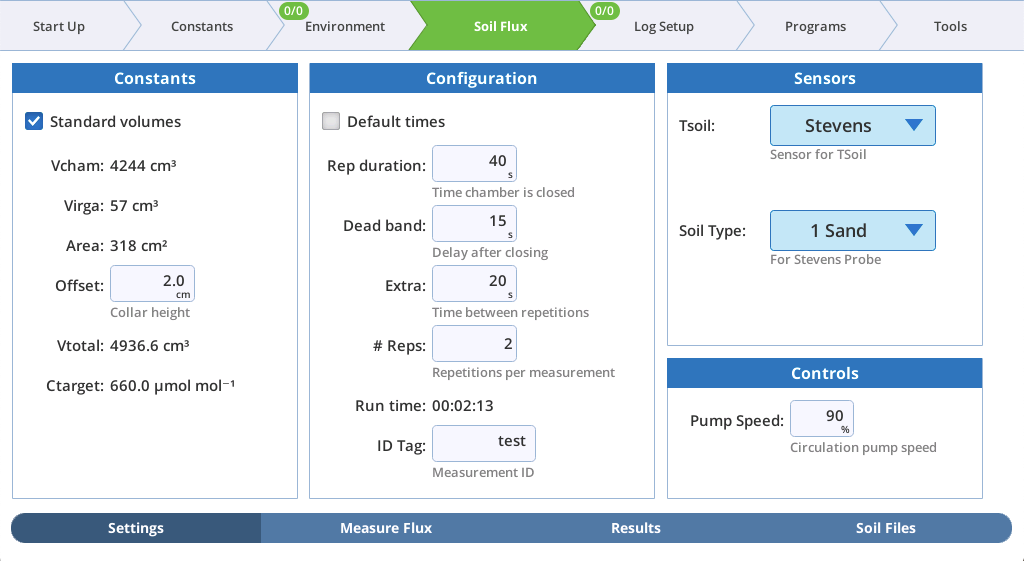
The Constants are computational constants used in the flux calculation. These can be found in the Data Dictionary under the group called SoilConst.
- Vcham: The volume of the chamber.
- Virga: Volume of the IRGA.
- Area: Exposed soil area within a collar.
- Offset: Height of the chamber base above the soil surface.
- Vtotal: Total volume. Computed as Virga + Vcham + Area × Offset
- Ctarget: Target concentration for computing fluxes.
Total volume (Vtotal) is computed from:
11‑9
The Configurations define the measurement parameters.
- Rep duration: Time (s) chamber is closed for each repetition.
- Dead band: Delay (s) after closing to begin computations.
- Num Reps: Number of repetitions per measurement.
- Extra: Delay (s) after opening before starting next repetition.
- ID Tag: An identifier that is added to the file name.
Each measurement consists of 1 or more repetitions (Reps). A repetition starts with the soil chamber closing, and remaining closed for a specified duration of seconds. Computations are skipped for the first dead band seconds of the repetition. At the end of the repetition, the chamber opens, and (if there are more repetitions) the system waits Extra seconds before starting the next repetition.
Under Sensors, choose the source of the soil temperature measurement (Tsoil):
- Stevens Probe: Connected to the soil CO2 flux chamber, or
- T1: Connected to T1 leaf temperature thermocouple on the head, or
- T2: Connected to T2 leaf temperature thermocouple on the head, or
- None
If you are using the Stevens HydraProbe, select the Soil Type from the menu.
The Controls section is where you set the circulation pump speed.
Measure Flux tab
The Measure Flux tab is where you start a measurement and observe the data as a measurement proceeds. There are live values on the right, but most of the display is devoted to a strip chart that is active only during a measurement. The chart plots Cdry (little dots, left axis), and the estimated flux (symbols, right axis). Once the repetition is completed, there will be a fitted curve (solid line) to Cdry after the dead band.
The purpose of the flux estimates is to help you know if the measurement is sufficiently long enough, or perhaps too long. Basically, if the estimates are still changing significantly by the end of the repetition, the repetition duration is not long enough.
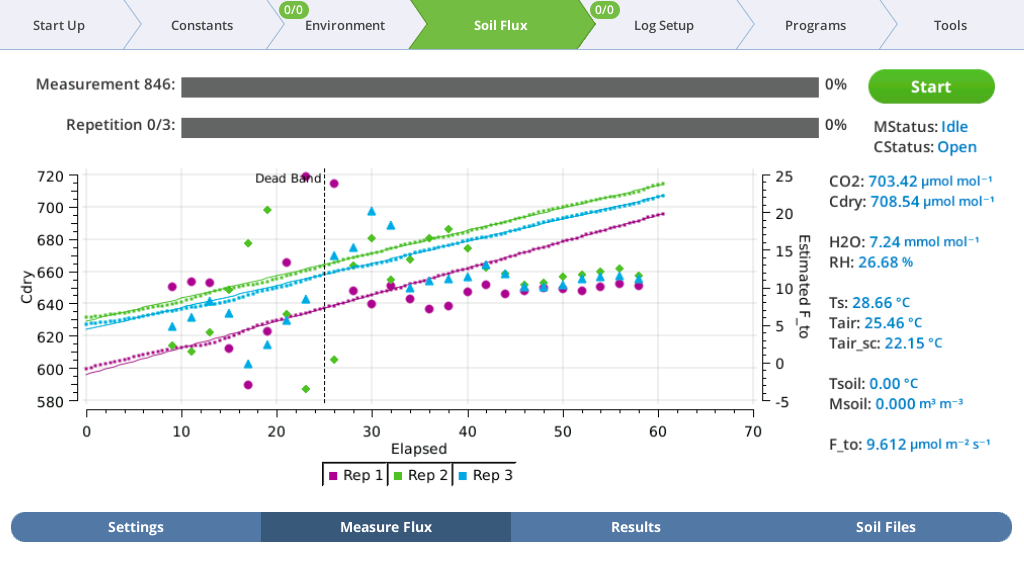
Performing a soil flux measurement does not require a normal LI-6800 log file to be open. If one is open, then at the end of each repetition, a log will happen automatically, and the open data file will have a record added to it consisting of the SoilConst, SoilConfig, and SoilComp2 groups of data, in addition to the standard groups (Meas, Stats, etc.).
Results tab
The results tab shows the results of the latest measurement, or the last recalled measurement. You can choose from the options:
- Cdry-time: The raw measurements and estimated flux for the measurement.
- Curve Fit: The residuals of the exponential to the raw data, past the dead band. The coefficients are in the table on the right of the display.
- Flux-Cdry: Flux as a function of concentration in the chamber, theoretically a straight line.
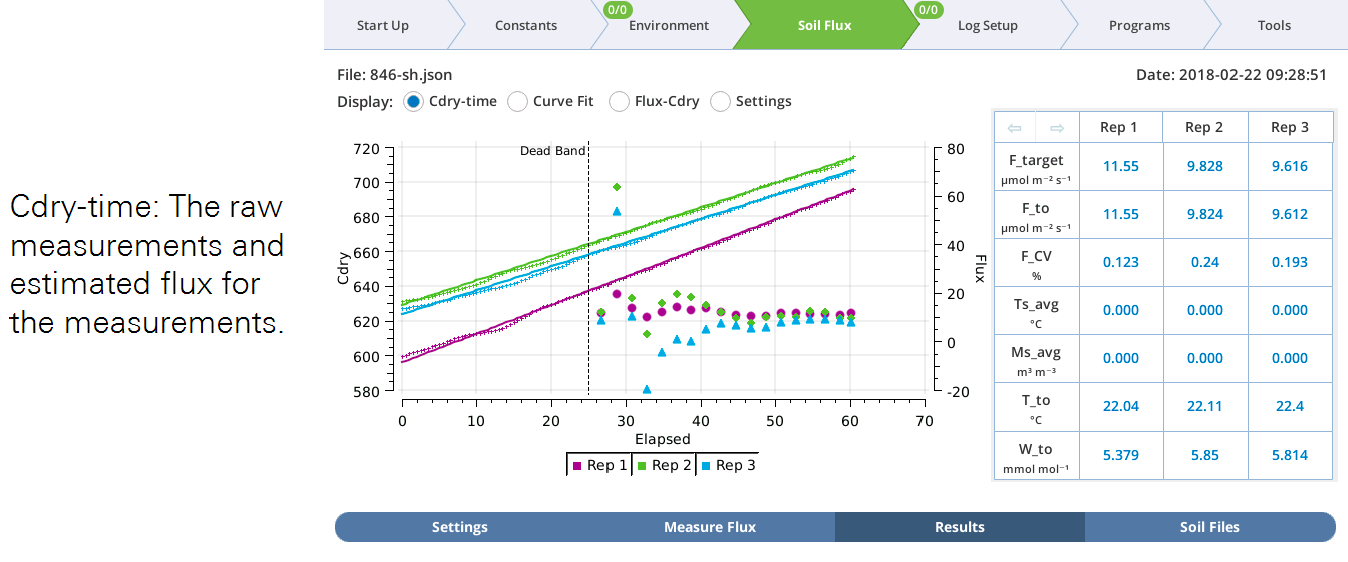
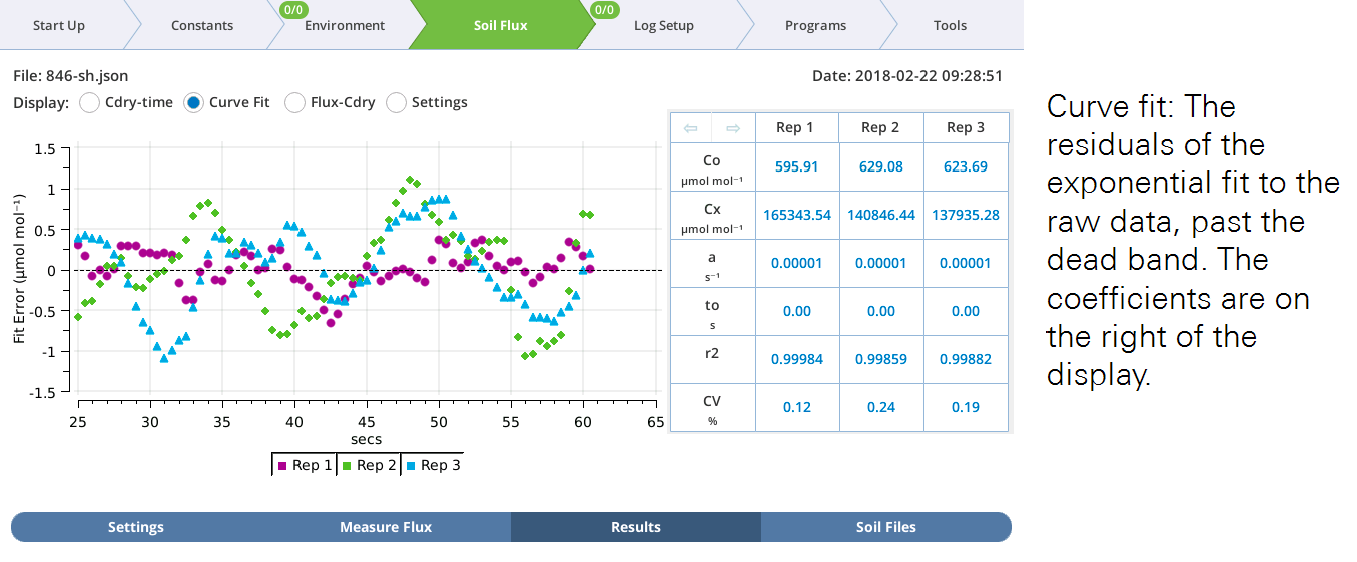
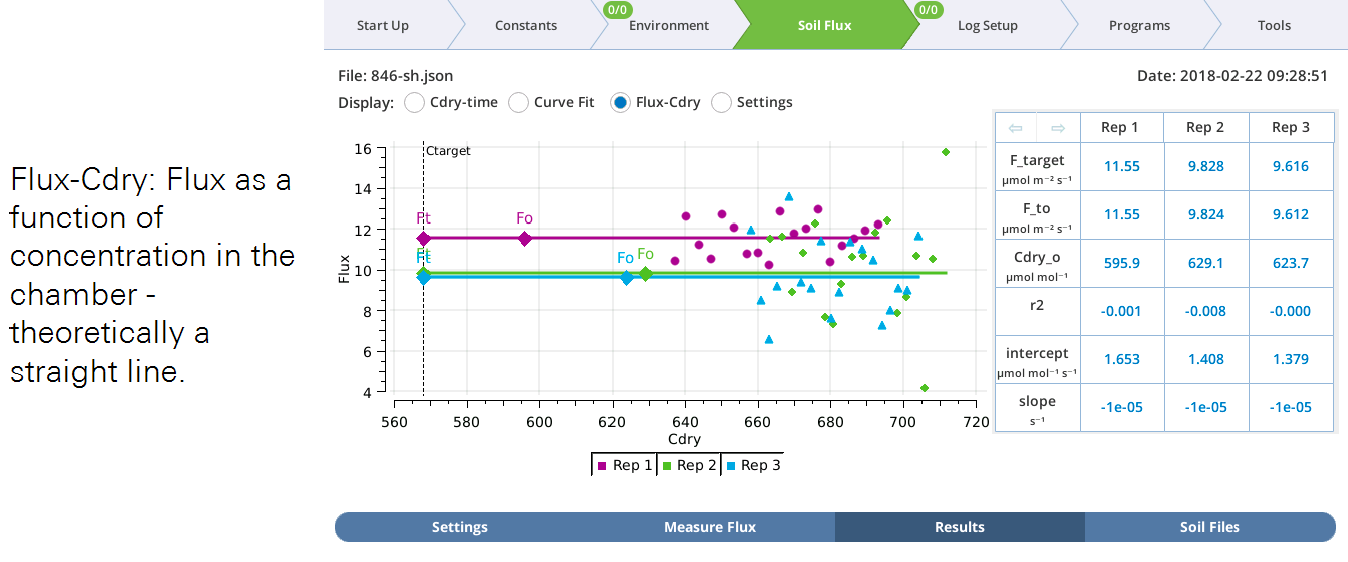
Soil tab
Every soil measurement is stored in a .json file (whether or not a normal LI-6800 data file is open) in /home/licor/logs/soil/, in a folder named for the day on which the measurement occurred. Each measurement has a unique number that increments each time. (This number is stored in /home/licor/values/soil/count, should you want to reset it.) This number is the first part of the name. If the ID tag (on the soil settings page) is not an empty string, then that will be the rest of the name. Thus, a file might be named 346.json, or 347 test.json.
To view a previous measurement, use the file picker in the Soil Files tab to navigate to the file and select it. Then tap the Load button. The file will be loaded into the Results page.
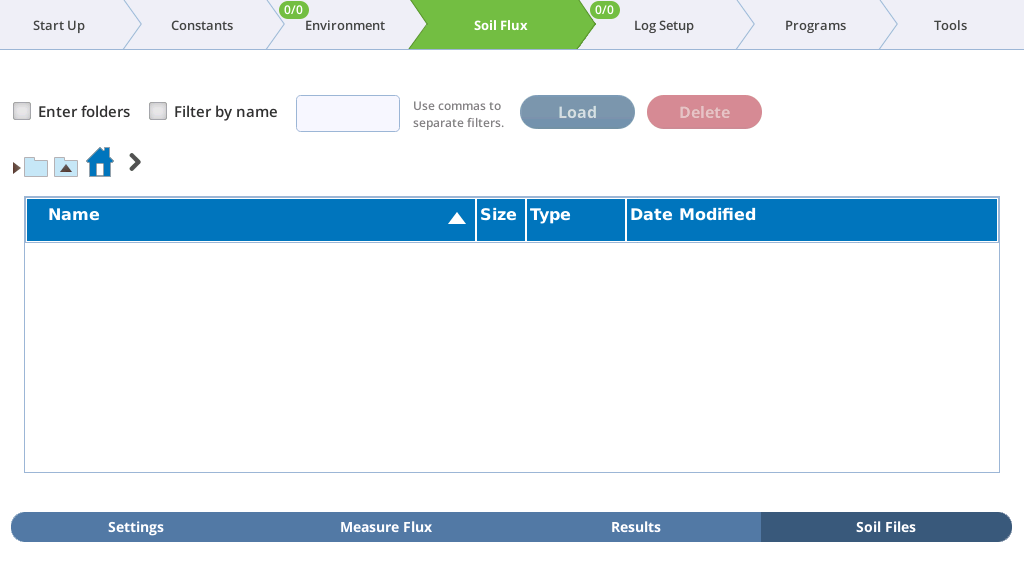
The Filter Files feature will limit the displayed files to ones whose name matches whatever string is entered in the box.
